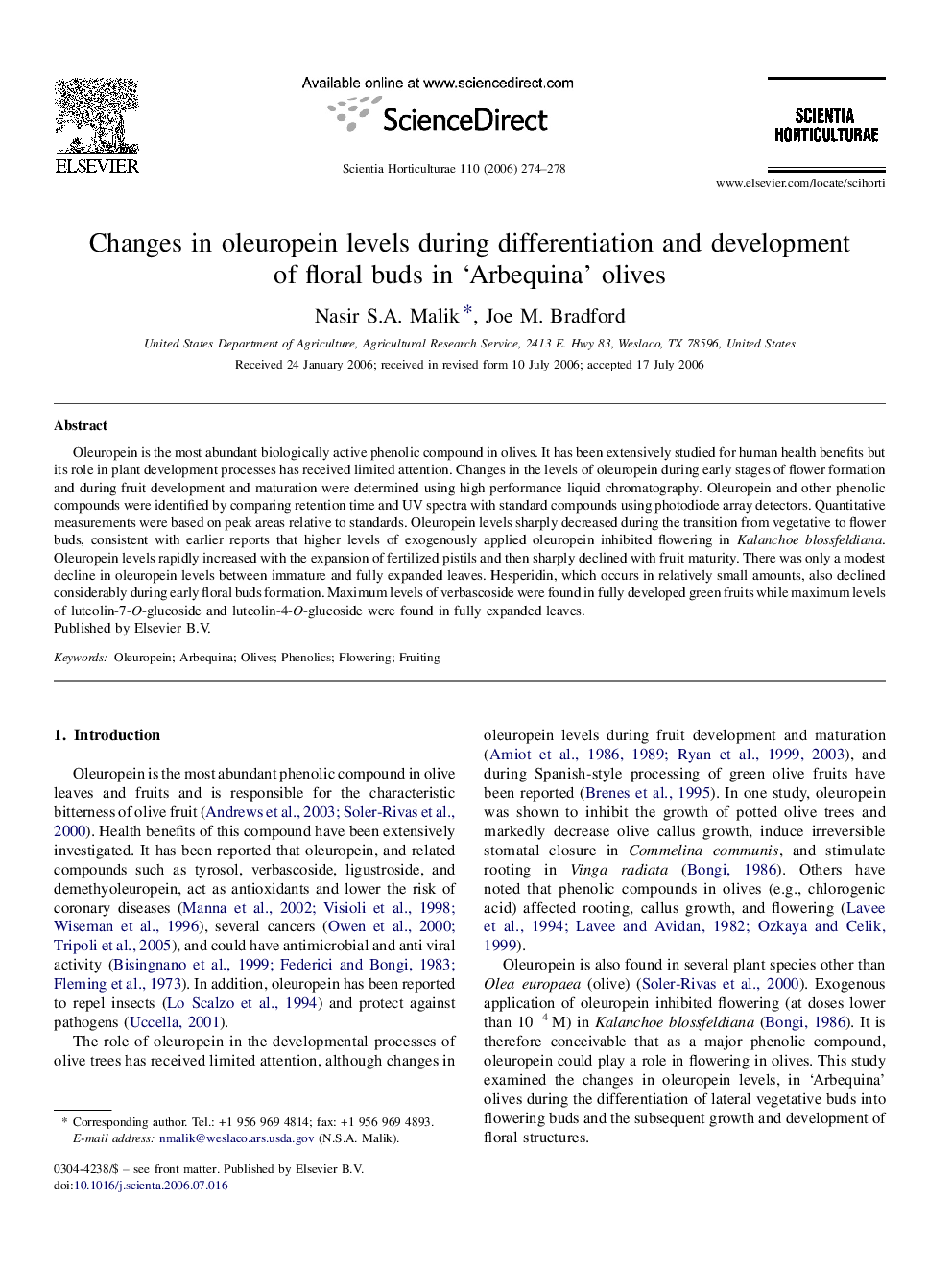| Article ID | Journal | Published Year | Pages | File Type |
|---|---|---|---|---|
| 4570001 | Scientia Horticulturae | 2006 | 5 Pages |
Abstract
Oleuropein is the most abundant biologically active phenolic compound in olives. It has been extensively studied for human health benefits but its role in plant development processes has received limited attention. Changes in the levels of oleuropein during early stages of flower formation and during fruit development and maturation were determined using high performance liquid chromatography. Oleuropein and other phenolic compounds were identified by comparing retention time and UV spectra with standard compounds using photodiode array detectors. Quantitative measurements were based on peak areas relative to standards. Oleuropein levels sharply decreased during the transition from vegetative to flower buds, consistent with earlier reports that higher levels of exogenously applied oleuropein inhibited flowering in Kalanchoe blossfeldiana. Oleuropein levels rapidly increased with the expansion of fertilized pistils and then sharply declined with fruit maturity. There was only a modest decline in oleuropein levels between immature and fully expanded leaves. Hesperidin, which occurs in relatively small amounts, also declined considerably during early floral buds formation. Maximum levels of verbascoside were found in fully developed green fruits while maximum levels of luteolin-7-O-glucoside and luteolin-4-O-glucoside were found in fully expanded leaves.
Related Topics
Life Sciences
Agricultural and Biological Sciences
Horticulture
Authors
Nasir S.A. Malik, Joe M. Bradford,
